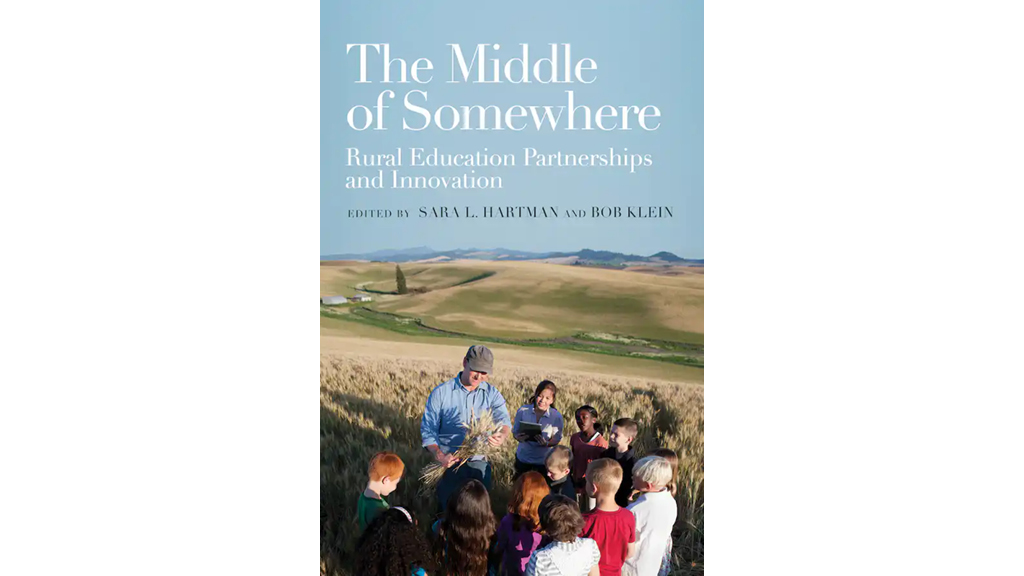
The Middle of Somewhere: Rural Education Partnerships and Innovation by Sara L. Hartman and Bob Klein (Harvard Education Press) is a book that serves as a beacon for school leaders who earnestly seek solutions to educational equity for rural students. By thinking of rural places as the “the middle of somewhere,” the authors present 10 case studies to bring to light collaborative partnerships between schools, communities, and postsecondary institutions that create learning opportunities for rural students. The book provides readers with a comprehensive rural context and a profound insight into rural education.
There are three parts to the book. Part 1 focuses on how partnerships can support and sustain rural teachers. In Part 2, the authors elaborate on some unique rural education networks as an innovative partnership. Some are developed by rural collaborators who identify needs and organize grassroots efforts to address rural education issues, often with very few monetary resources. As kind of a coda to the book, Part 3 elevates the theme of the book and its advocacy agenda. At its heart, The Middle of Somewhere is about the power of partnerships to address inequities that often lead to injustice and a lack of inclusion in rural educational context.
While all chapters pay attention to rural inequities and the ability of partnerships to incubate solutions that address challenges in rural places, each model can be seen as a unique design for a specific rural landscape. In the Appalachian Mountains, the school-community-university partnership in southern Ohio offers teacher candidates place-based, career-connected learning experiences in rural schools. The partnership has been used as a strategy to solve teacher shortages. In Mississippi, a partnership school has been built in the state university to prepare elementary teacher candidates to serve a large rural population. In Montana, partners used four key practices—communication, celebration, coordination, and collaboration—to build trilateral partnerships to prepare K-12 teacher candidates to work in rural schools and to support middle-grade math teachers in rural Montana. In southwest Virginia, school-industry-university partnerships help rural teachers increase engineering content in sixth- to eighth-grade classrooms.
Rural students, families, and communities deserve a voice in policymaking decisions and an investment in their educational infrastructures. To attain this goal, the authors include exemplary partnership models to support Native American students, students with disabilities, and undocumented immigrant students. The Alliance of Indigenous Math Circles, for example, has done considerable work (e.g., hosting one-week residential “math circle camps” for students in grades 6-12, workshops for K-12 teachers, community math festivals) to serve Indigenous students in the Navajo and Hopi Nations on their reservations.
Partnerships are not a panacea for all rural education issues. Partnership work is challenging and requires trade-offs. While the book provides a variety of models, each rural school district needs to capitalize on its unique rural strengths to form and sustain strong partnerships and to blur roles and boundaries during partnership development and sustainment. Adapting, rather than adopting, a model from the book is highly recommended.
(PHOTO COURTESY OF HARVARD EDUCATION PRESS)
Jinghong Cai (jcai@nsba.org) is the senior research analyst at NSBA’s Center for Public Education.

Share this content